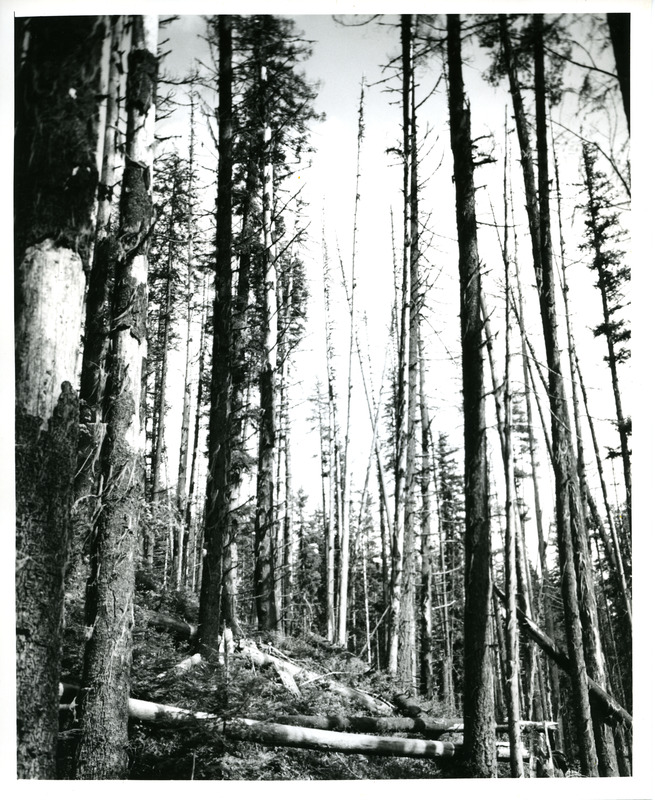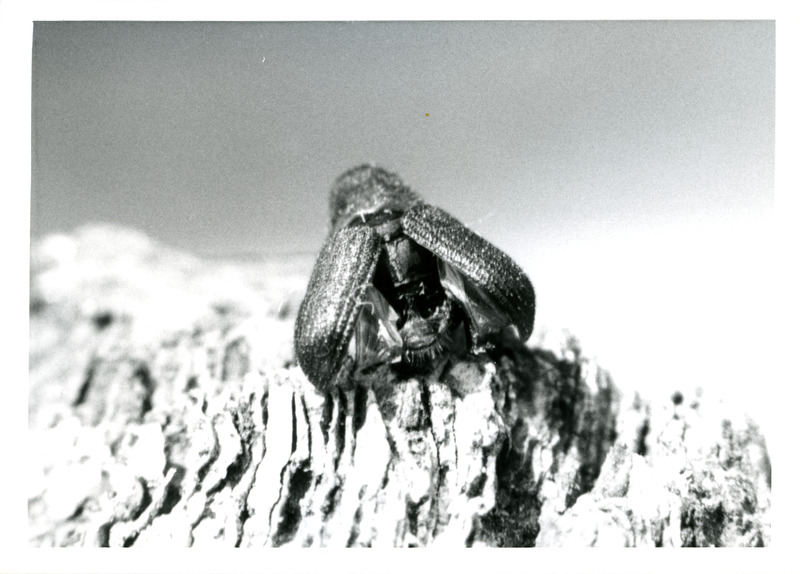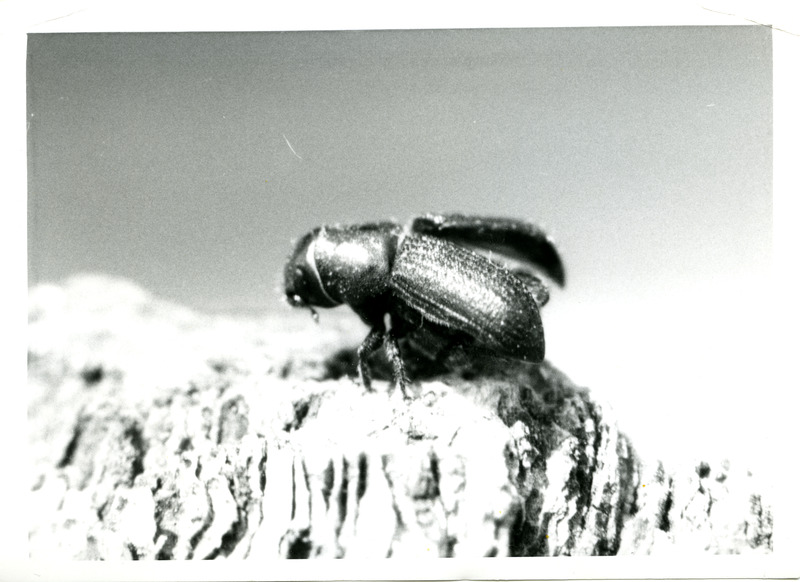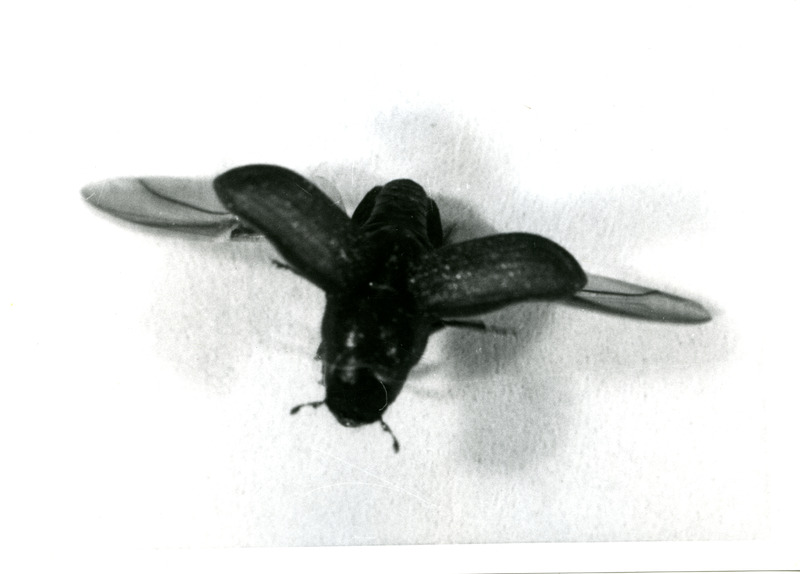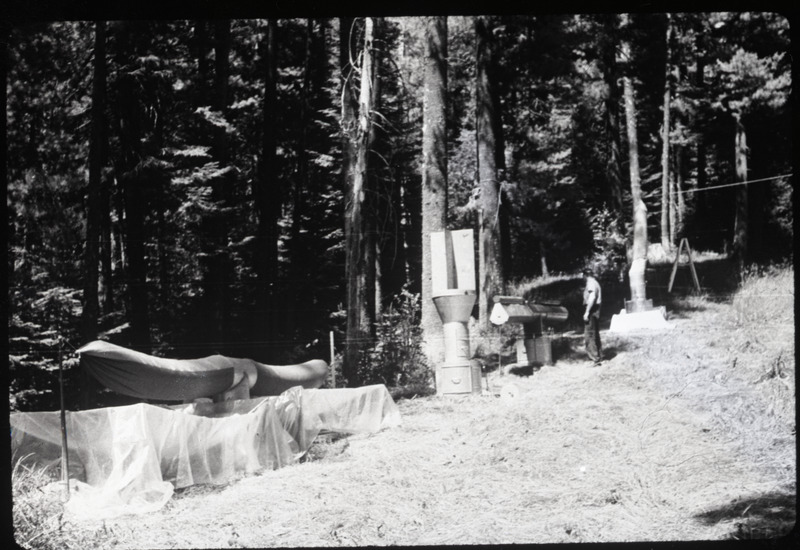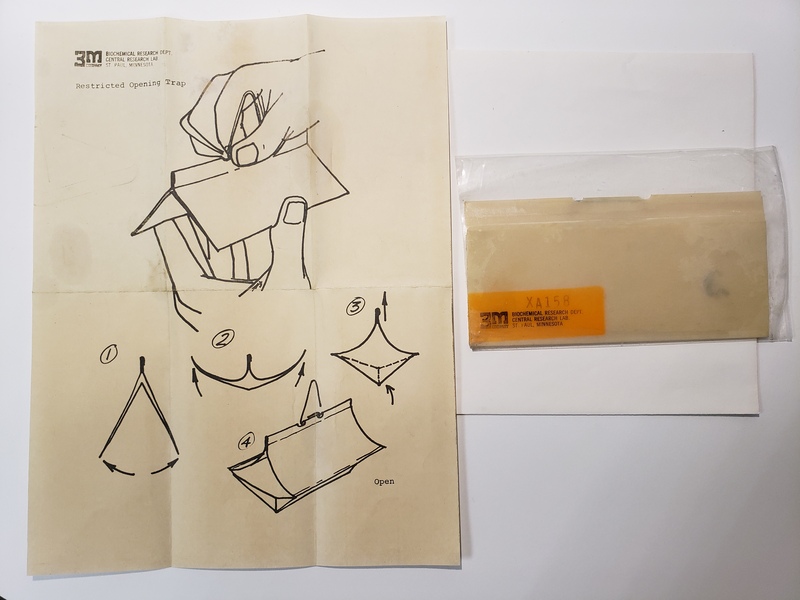One of the most destructive forest insects in western North America, mountain pine beetles (Dendroctonus Ponderosae) will attack any pine species rather than a select few. In Idaho, timber production is a valuable commodity with sales of lumber alone well over $1 billion in 2018. In the late 1960s, it was estimated that mountain pine beetles killed roughly 400,000 trees in the in just the forests of the northern Rocky Mountains. The total damage has widely fluctuated over the years based on number of trees available at risk and stress factors affecting those trees. For example, trees were killed on over 1.9 million acres in 2010 in Idaho alone, but only 28,000 acres in 2017.
Just 1/4 inch in length, mountain pine beetles burrow under the bark, continuing in a vertical line depositing eggs along the way. Once the eggs hatch, the larvae tunnel away horizontally, spreading the destruction out around the tree. There are four stages of development for the mountain pine beetle: egg, larva, pupa and adult, which typically all happen within one year. Adults spend about less than one month outside the tree, flying around seeking new trees to infest.
Mountain pine beetles communicate both by chemical and sonic methods, chemically through pheromones secreted by the female beetles and the smell of the sap produced by burrowing, and sonically by males making a chirping sound to warn off other males when they have found a mate. Larvae also make chewing sounds when eating the wood, alerting others to the potentially reduced food source and to find a new path.
Extensive research has been done to reduce the damage caused by mountain pine beetles. In addition to good forestry practices such as thinning, insecticides can also be used but are not effective on a super large scale.
In 1968, after an extensive joint research project led by the Boyce Thompson Institute for Plant Research and Potlatch Forests, Inc., a biological method was introduced to fight the beetles. A synthetic pheromone was developed which could be applied to a simple trap that could be placed among the trees.
Sources
- Randy Brooks, Mountain Pine Beetle
- 2017 Forest Health Highlights
- Yvonne C. Barkley, Everything you have always wanted to know about bark beetles, but were afraid to ask


